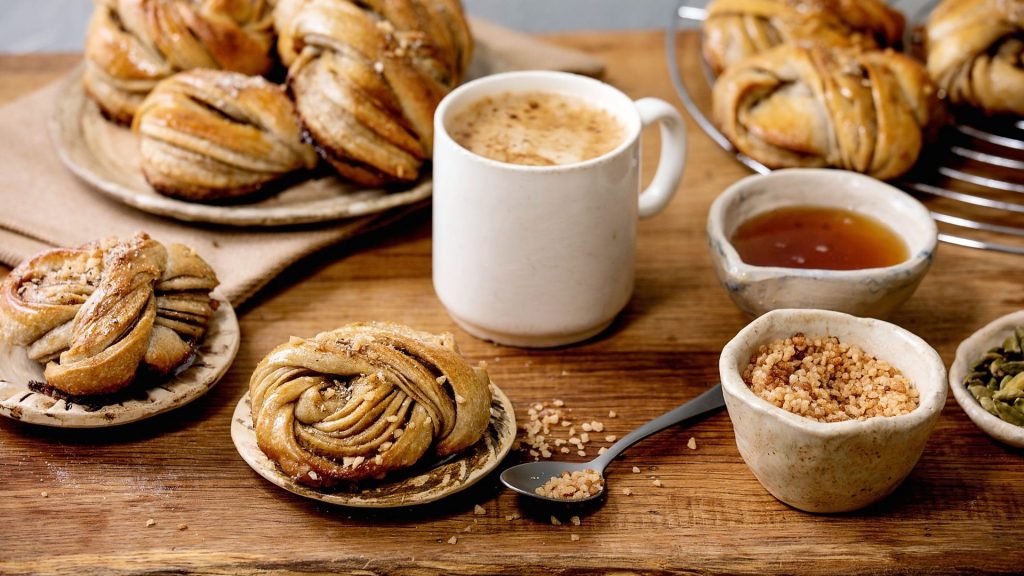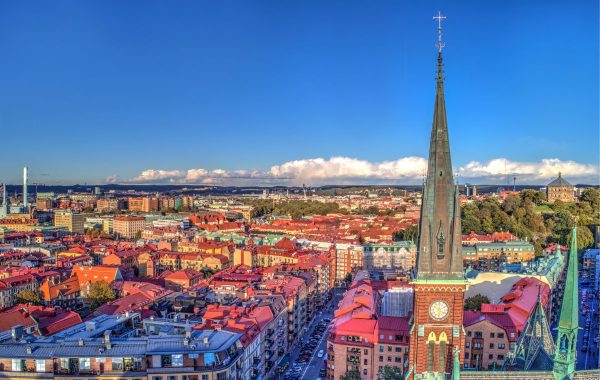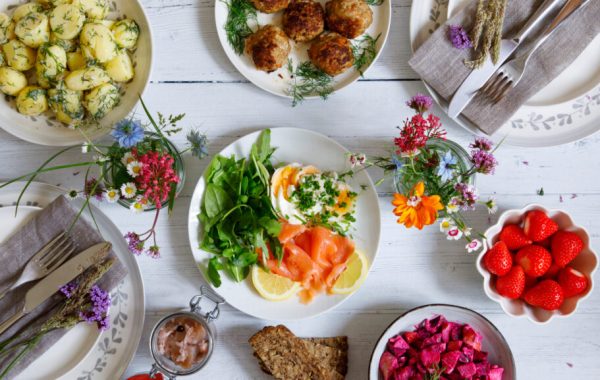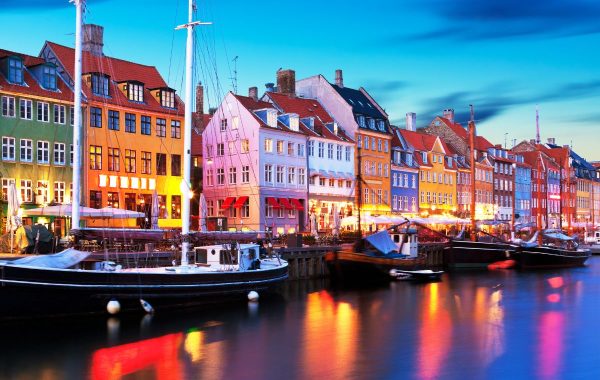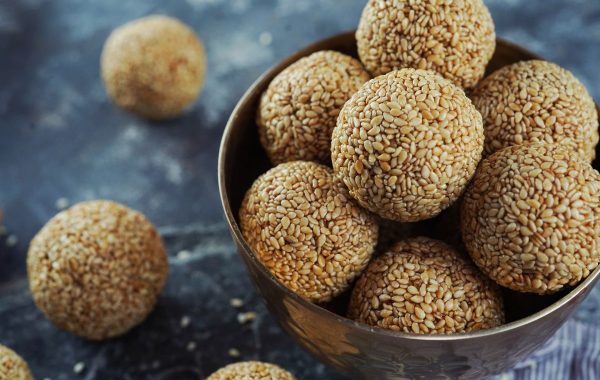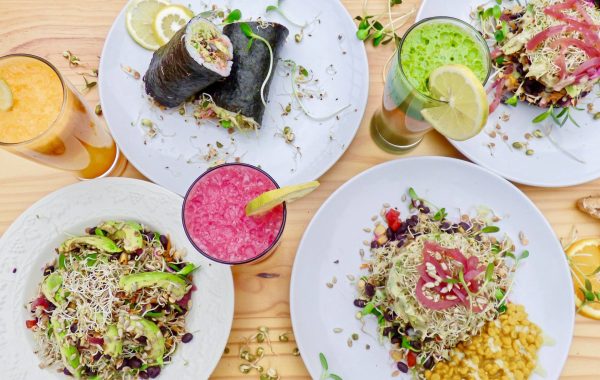Swedish cuisine offers a delightful array of flavors, from savory reindeer meat to sweet cinnamon buns, and unique items like salty licorice and cloudberry jam. Each food item carries a piece of Swedish culture, making it the perfect souvenir for anyone looking to bring a taste of Sweden back home. Here’s a selection of the top Swedish food souvenirs that capture the essence of Sweden’s culinary traditions.
1. Kalix Caviar (Kalix Löjrom)
Kalix Caviar, also known as Kalix löjrom, is a special type of vendace roe that comes from Swedish Lapland. This caviar has a unique flavor due to the brackish waters around the Piteå, Luleå, Kalix, and Haparanda archipelagos. Dubbed “The gold of the Bothnian Bay,” it holds the distinction of being Sweden’s first Protected Designation of Origin (PDO) product. It’s traditionally served on flatbread with finely chopped red onion, dill, and crème fraîche, a combination that showcases the delicate, briny taste. Kalix Caviar is available in top restaurants, markets, and select seafood shops throughout Sweden.
2. Reindeer Meat (Renkött)
Reindeer meat has been a staple in the Sámi diet for centuries. It’s lean, flavorful, and usually prepared by salting, smoking, or curing. One popular version is ‘souvas,’ a smoked reindeer meat that has achieved Slow Food Presidia status for its importance to Sámi culture. Dried reindeer meat makes an excellent souvenir, providing a unique flavor and cultural experience that pairs perfectly with a cold beer.
3. Västerbotten Cheese (Västerbottensost)
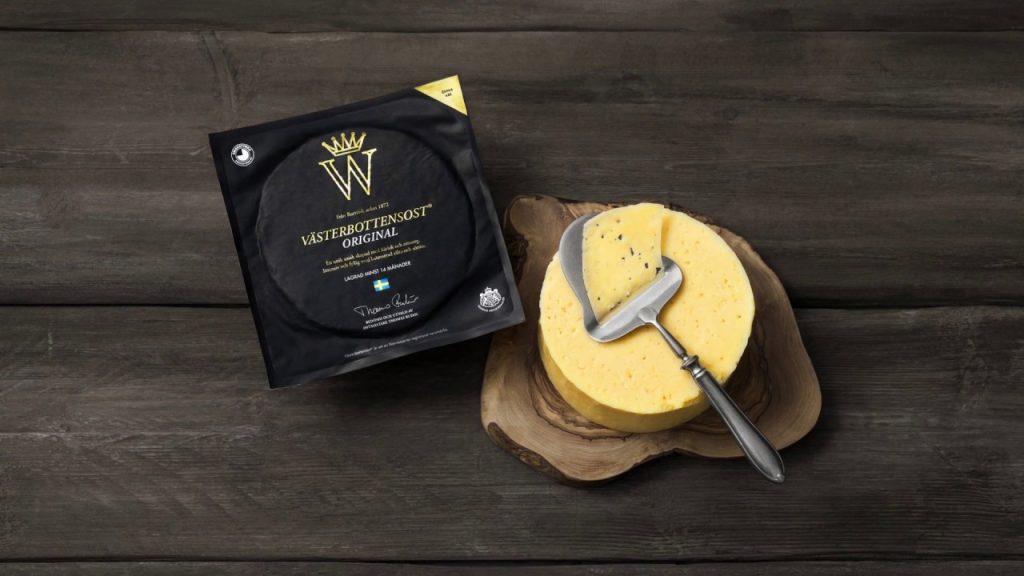
Hailing from Västerbotten County, Västerbotten cheese is a beloved part of Swedish cuisine, especially during holiday gatherings. This cheese must be made in northern Sweden and aged for at least 14 months, giving it a distinctive, salty taste and granular texture. It’s often enjoyed as part of the Swedish S.O.S. appetizer plate, alongside butter and herring. A slice of Västerbotten cheese is best served with an ‘osthyvel’ (cheese slicer), another iconic Swedish item found in nearly every Swedish household.
4. Flatbread and Crispbread (Tunnbröd and Knäckebröd)
Flatbread (tunnbröd) and crispbread (knäckebröd) are traditional Swedish breads. Tunnbröd is often soft or slightly crisp, made with a variety of grains like wheat, barley, oat, or rye, and is most common in northern Sweden. Crispbread, usually made of rye, is a staple across the country and is known for its circular shape and long shelf life. If you’re near Mjälloms Tunnbröd in the High Coast, you can even participate in a flatbread-baking class. Skedvi Bröd, another renowned crispbread brand, has a gastro-destination in Dalarna where visitors can see traditional baking methods and explore a food hall.
5. Cloudberry Jam (Hjortronsylt)
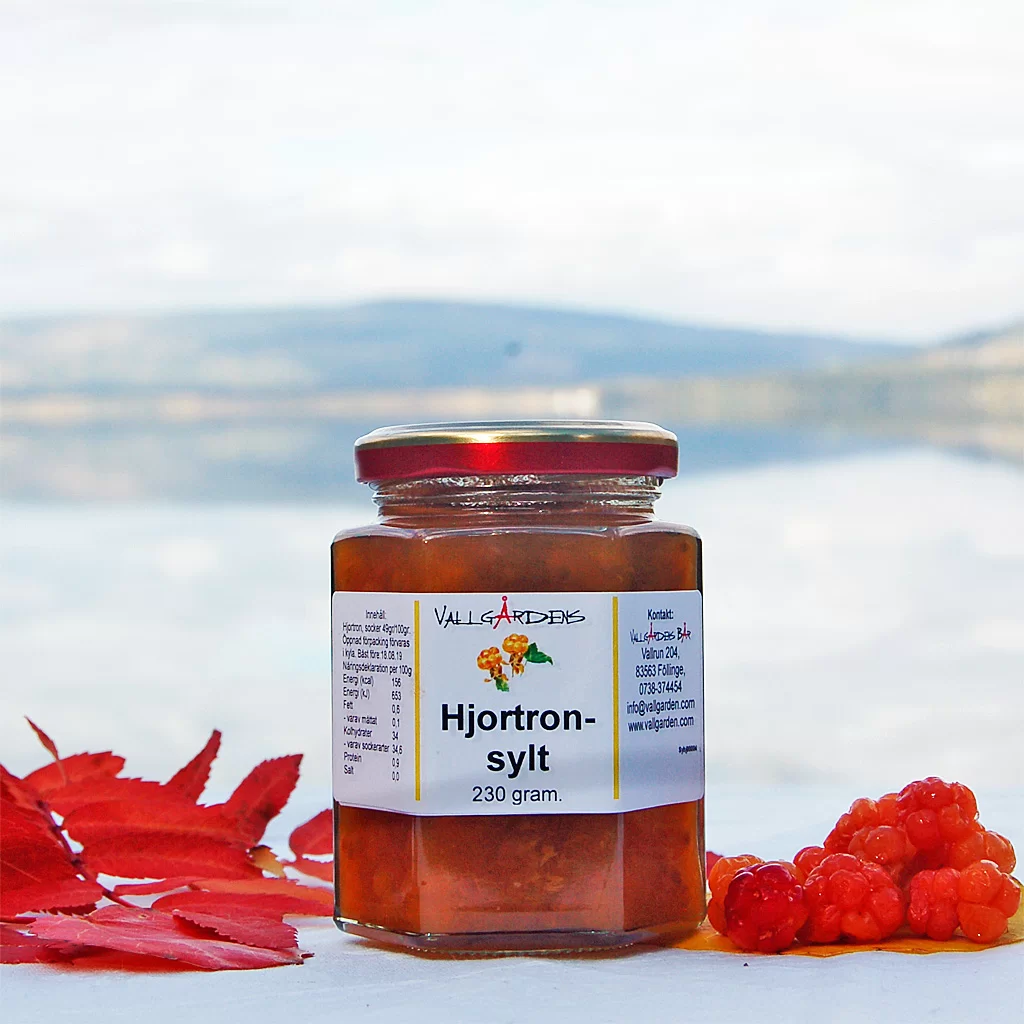
Cloudberries are a rare, golden-colored berry found in the marshlands across Sweden. They have a unique taste—some say it’s a mix of sweet and tart flavors. During berry season from mid-July to mid-August, Swedes harvest and make them into jam. Bring a jar of cloudberry jam home and enjoy it on waffles, paired with whipped cream, or warmed and poured over vanilla ice cream for a simple yet delicious dessert.
6. Roasted Oat Flour (Skrädmjöl)
Originating from Värmland in western Sweden, skrädmjöl is a roasted oat flour with a distinct nutty flavor. This product is made by roasting oats and grinding them into a fine flour, a method that began in the 17th century to prevent spoilage. Skrädmjöl is a protected product and holds a Slow Food Presidia listing, which celebrates its cultural significance and quality. While difficult to find outside Värmland, it’s available from Swedish online shops and is perfect for adding a rich flavor to baking.
7. Gingerbread Cookies (Pepparkakor)
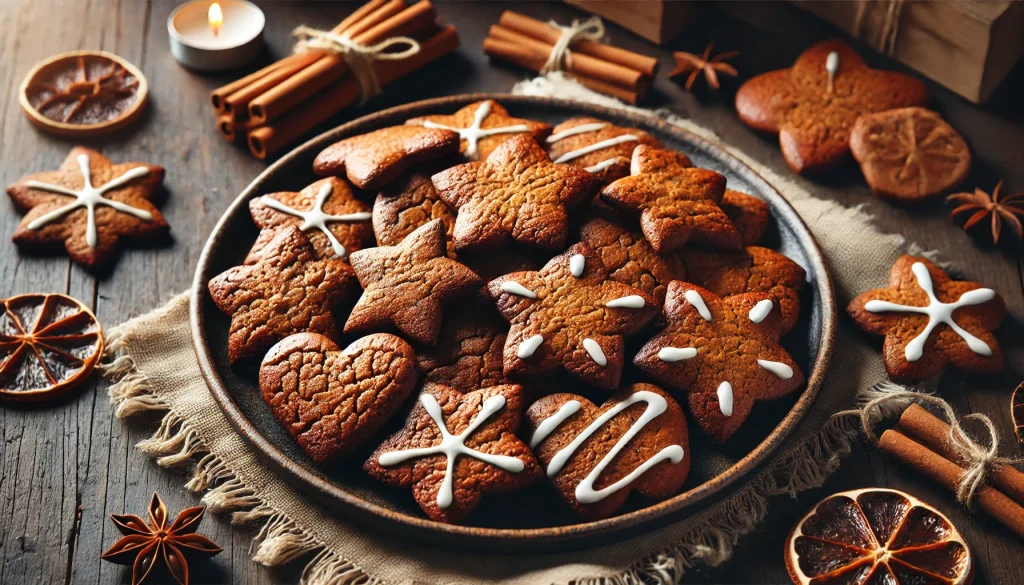
Gingerbread cookies, or ‘pepparkakor,’ are an iconic part of Swedish Christmas traditions. These crisp, spiced cookies come in shapes such as stars, hearts, and the traditional gingerbread men and women. Many Swedish families enjoy building and decorating gingerbread houses during the holiday season. In souvenir shops, gingerbread molds range from the classic shapes to moose and lávvus. Pepparkakor can be eaten alone or paired with blue cheese or brie for a delightful contrast of flavors.
8. Pyramid Cake (Spettekaka)
Spettekaka is a traditional cake from Skåne in southern Sweden, typically served at weddings and festive events. Made of eggs, potato starch flour, and sugar, it’s baked on a spit and layered with decorative white or pink icing. Spettekaka holds a PGI certification and can be a bit challenging to transport because of its unique shape, but it’s often served in pieces with ice cream and fresh fruit, making it easy to enjoy no matter its form.
9. Pick and Mix Candy
Swedes have a well-documented love of candy, consuming about 16 kilos per person each year. The popular pick-and-mix candy selections found in supermarkets, kiosks, and gas stations offer a fun assortment of Swedish treats. Notable options include Dumle (chocolate-covered toffee), Kexchoklad (chocolate-covered wafers), Ahlgrens Bilar (car-shaped gummies), and the infamous salty licorice. Djungelvrål, a salty licorice shaped like a monkey, is a particular Swedish favorite. Many varieties can also be bought in pre-packaged bags, perfect for taking home.
8. Candy Cane (Polkagris)
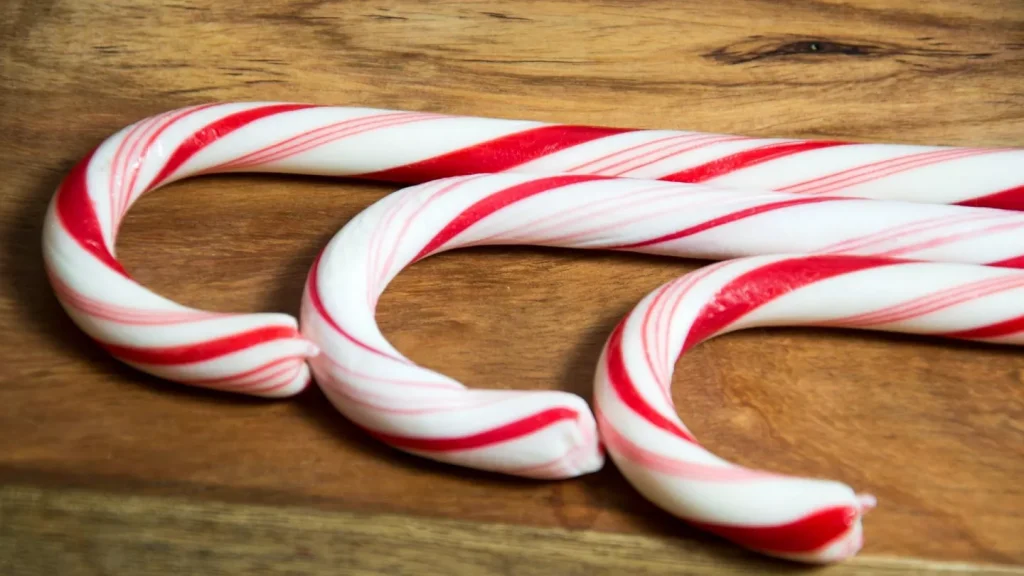
The polkagris, or Swedish candy cane, dates back to 1859, when it was first crafted in Gränna, a small town in southern Sweden. Traditionally, these peppermint sticks are made on marble tables for the perfect consistency. While the classic flavor is peppermint, polkagrisar now come in a wide range of flavors and colors. Head to Gränna if you’d like to join a candy-making class and learn the history behind these festive treats.
11. Swedish Fika
No visit to Sweden is complete without experiencing ‘fika,’ a time-honored custom of sharing coffee and sweets with friends. The classic fika treat, the cinnamon bun, is so beloved that it has its own day on October 4th. While cinnamon buns are best enjoyed fresh, Swedish bakeries also offer the ‘seven types of cookies,’ including classics like Hallongrottor (raspberry-filled cookies) and Dammsugare, a green marzipan-covered roll flavored with punsch liqueur. A selection of these treats makes a delightful gift and a reminder of Sweden’s cozy coffee culture.
Bringing Your Swedish Souvenirs Home
For visitors from other EU countries, most food items can be freely brought across borders. However, always check the specific import regulations in your home country, especially if traveling outside the EU, to ensure smooth passage for your Swedish food souvenirs.
With options ranging from cheeses and crispbreads to sweet treats and salty licorice, each of these Swedish specialties tells a story of local heritage and culinary artistry.
For latest travel news and updates, food and drink journeys, restaurant features, and more, like us on Facebook or follow us on Instagram. Read more on Travel and Food Network
Book Your Travel Packages
14 Day Scandinavian Tour of Denmark, Norway and Sweden
10 Day Europe Tour of Germany, Czech Republic, Hungary and Austria


